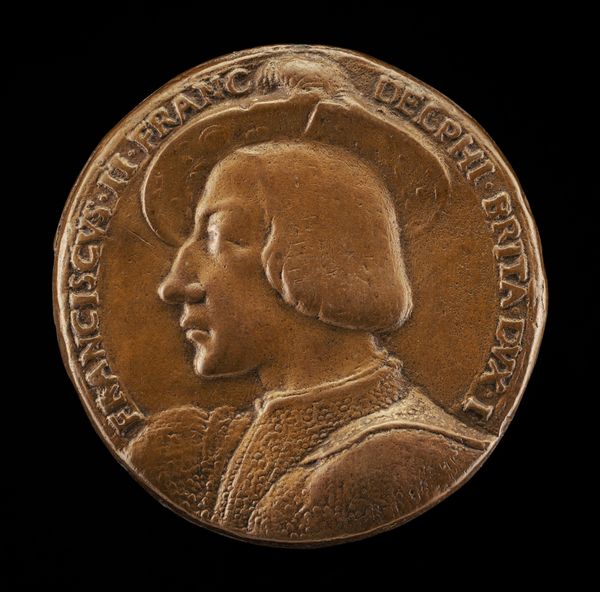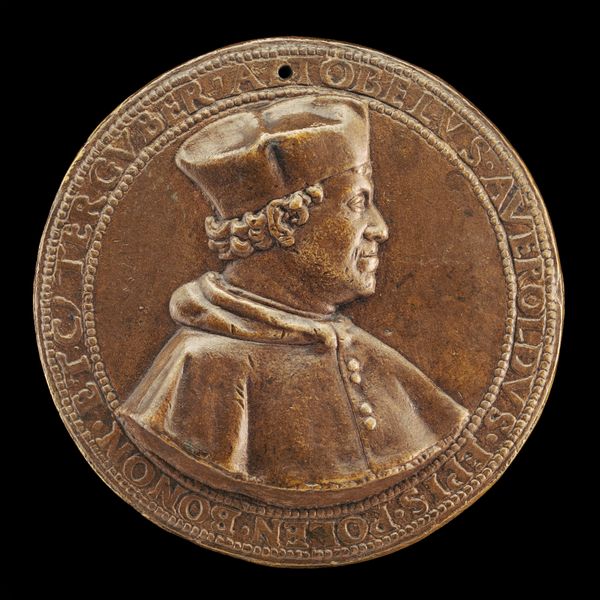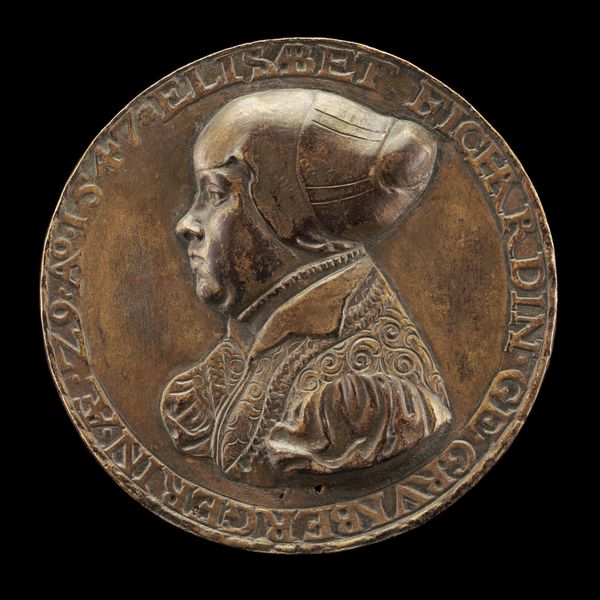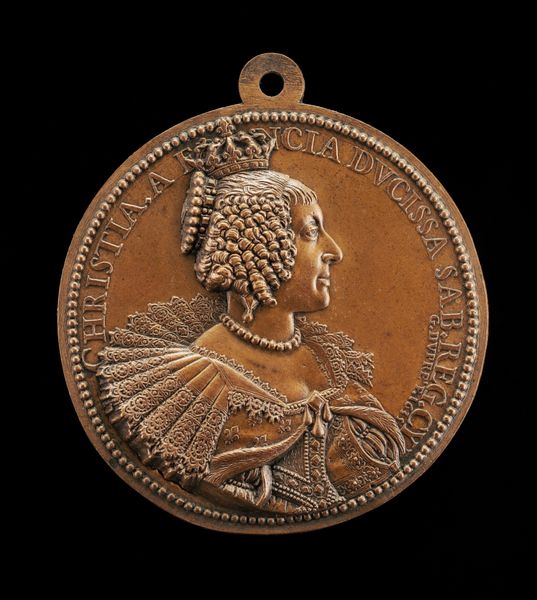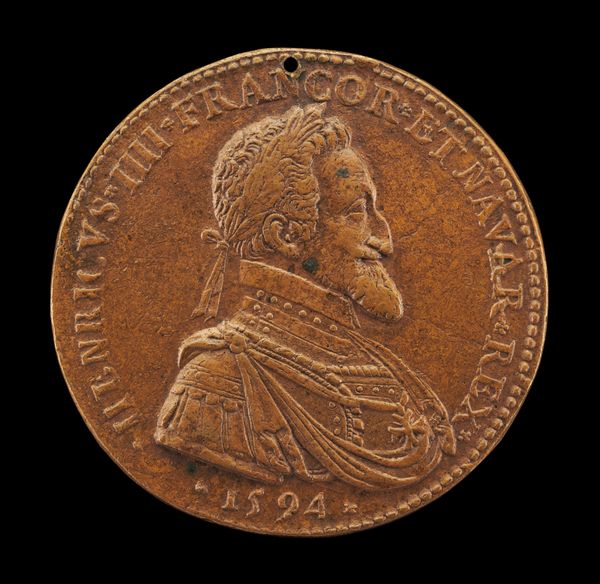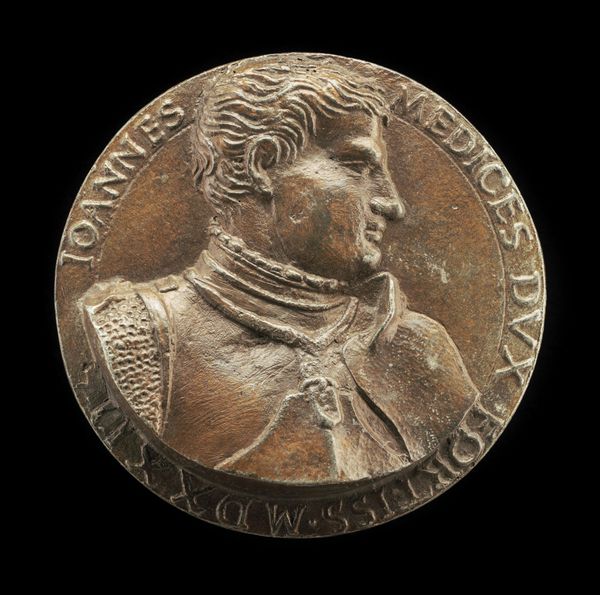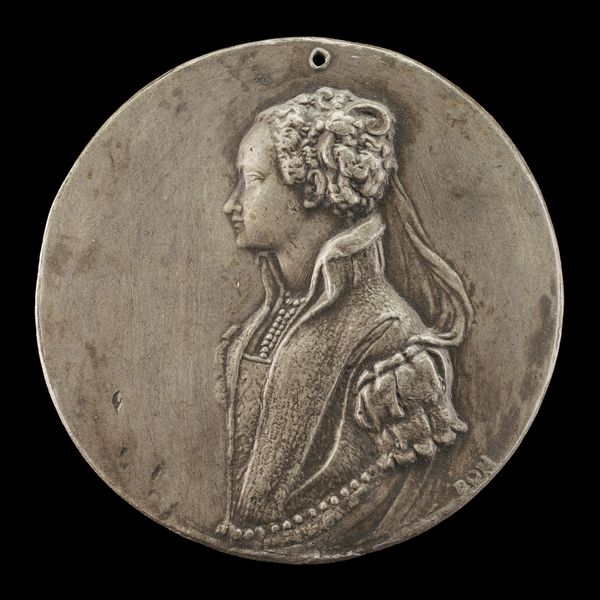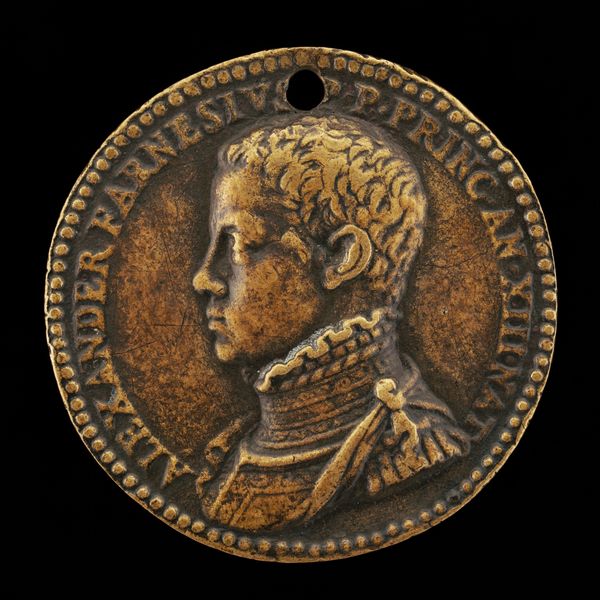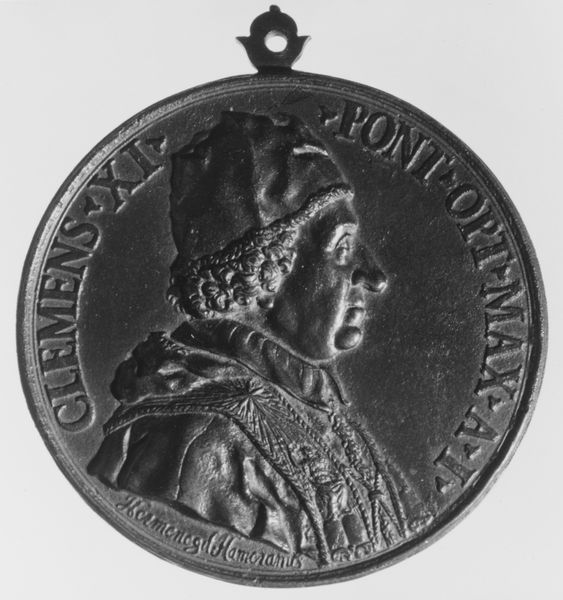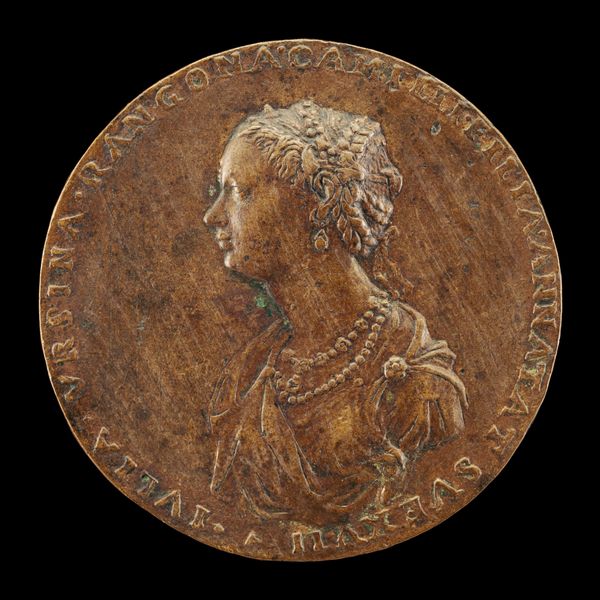![Susanna Schlecht Zäh, born 1541, Wife of Sebastian Zäh 1560 [reverse] by Antonio Abondio](/_next/image?url=https%3A%2F%2Fd2w8kbdekdi1gv.cloudfront.net%2FeyJidWNrZXQiOiAiYXJ0ZXJhLWltYWdlcy1idWNrZXQiLCAia2V5IjogImFydHdvcmtzLzA1NjI4MGZhLTU5ZjEtNDM4OS04YjRlLTNhOGI2ODVlNzMwMy8wNTYyODBmYS01OWYxLTQzODktOGI0ZS0zYThiNjg1ZTczMDNfZnVsbC5qcGciLCAiZWRpdHMiOiB7InJlc2l6ZSI6IHsid2lkdGgiOiAxOTIwLCAiaGVpZ2h0IjogMTkyMCwgImZpdCI6ICJpbnNpZGUifX19&w=3840&q=75)
Susanna Schlecht Zäh, born 1541, Wife of Sebastian Zäh 1560 [reverse] 1572
0:00
0:00
metal, sculpture
#
portrait
#
medal
#
metal
#
sculpture
#
11_renaissance
#
sculpture
Dimensions: overall (diameter): 3.92 cm (1 9/16 in.) gross weight: 23.8 gr (0.052 lb.) axis: 12:00
Copyright: National Gallery of Art: CC0 1.0
Curator: So, here we have a portrait medal, "Susanna Schlecht Zäh, born 1541, Wife of Sebastian Zäh 1560 [reverse]," made in 1572 by Antonio Abondio. It’s rendered in metal, most likely bronze, and it’s quite small, designed to be held or worn, maybe. Editor: Small but impactful, I'd say! The sitter's profile immediately grabs your attention, she exudes such poise... Almost severe, wouldn't you agree? There's an incredible firmness in her gaze. Curator: That severity speaks to the role of portraiture in solidifying social status during the Renaissance. Medals like these functioned as miniature monuments, celebrating not just the individual, but also the family and its lineage. Notice the inscription circling her image – it serves to immortalize her name and marital connection. Editor: True, but it also strikes me that she could be anyone. There's a detachment, a formal air that transcends her identity as a "wife". You almost lose the human Susanna. I imagine her everyday self was different from this bronze likeness. Curator: That distance, I think, stems from the medium itself. Metalwork often conveyed an aura of permanence and authority. Consider the scale of distribution – a portrait like this wasn't intended for intimate viewing like a small painting might be. Instead, it's an object meant to circulate, a tangible expression of the family's influence. Editor: Makes you wonder, though, doesn’t it? About the weight of expectations resting on her. Did she feel confined by these representations, these bronze cages of wifely virtue? Or did she embrace the symbolism? Perhaps there was comfort in knowing that your image would transcend time... Curator: And that tension between personal identity and social expectation is precisely where the art lies, isn't it? Abondio has crafted more than just a portrait; he’s fashioned a complex historical object embedded with status, social conventions, and fleeting clues about a woman in 16th-century Germany. Editor: Absolutely, what this has given me is a longing for that world. Even just seeing this medallion, it sparks the wish to witness that place and moment. How Susanna herself felt... That tension gives it all its charm.
Comments
No comments
Be the first to comment and join the conversation on the ultimate creative platform.
